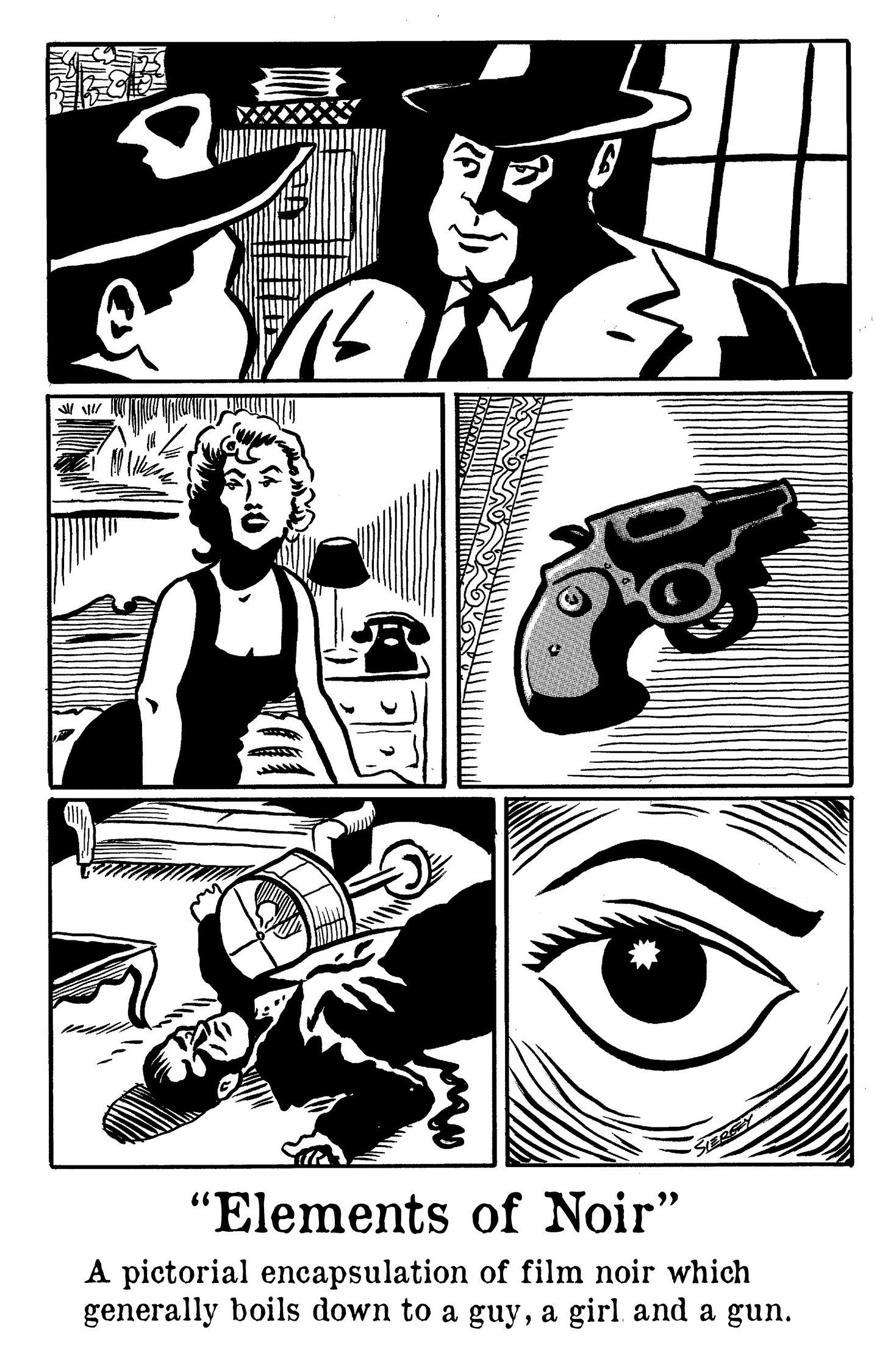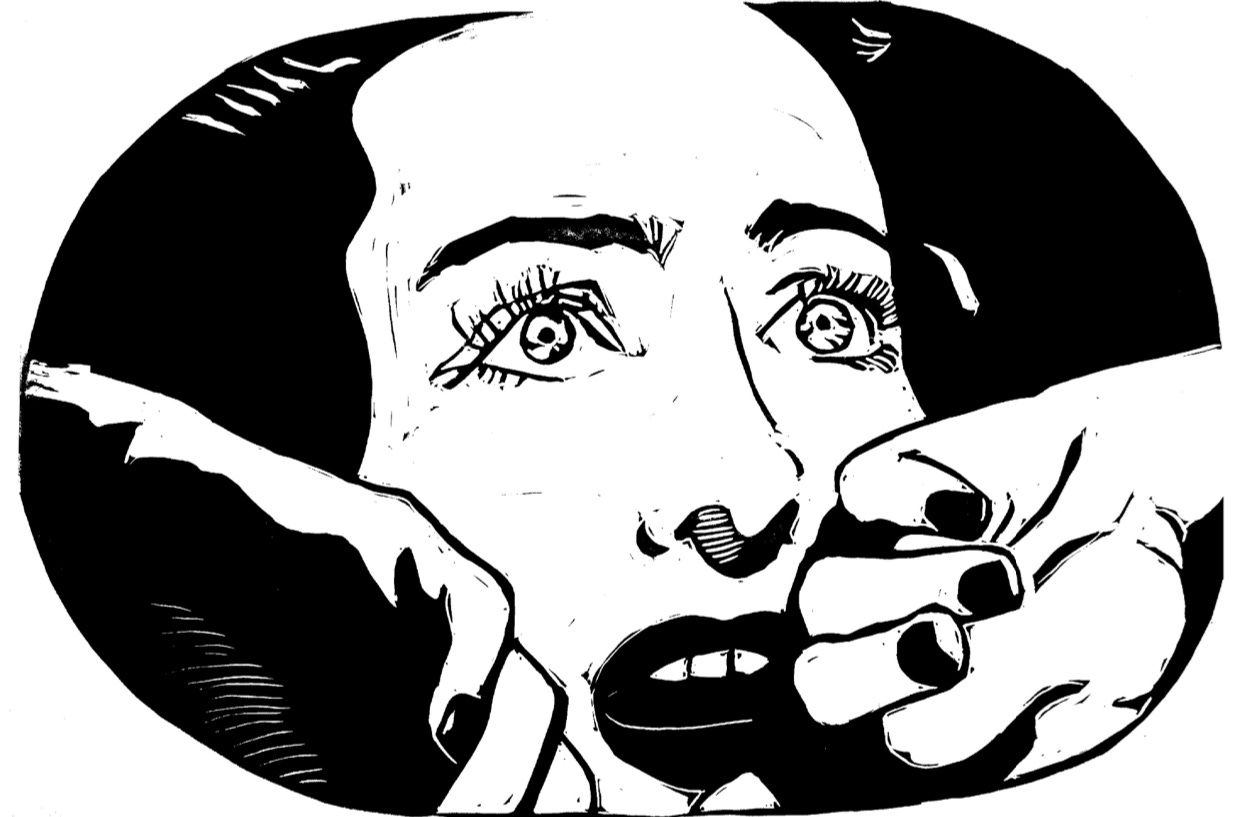The Show Notes for Episode 29: Exploring Noir
A companion to Episode 29: Exploring Noir
Welcome to the Shownotes!
This is a companion to episode 29: Noir. Click to listen.
We are staying organized with timestamps (folks seemed to like them). As always, feel free to comment, and we will address it in future shows! Enjoy.
Be sure to check out Georgia and Jim’s art show:
Touch of Noir at the Promise You Art House, February 28th, Highland, IN.
Don’t forget to Rate the show!
Join us on Discord: https://discord.gg/2nnmKgguFV
Subscribe and Share our Substack newsletter (https://jothamaustin.substack.com) to get email updates, never miss an episode, and spread the word!
Episode Artwork by Jim Siergey and Georgia Geis
The Show Notes:
00:00 – Welcome and Introductions
• Joe, Georgia, and Nick introduce the episode.
• Special guest Jim Sergey, a talented artist, joins the conversation.
00:20 – Meet the Special Guest: Jim Siergey
• Jim shares his background as an artist.
• How his early experiences with drawing got him into trouble at school.
00:28 – Drawing and Creativity in School
• Jim’s early passion for drawing.
• How creative expression wasn’t always welcomed by teachers.
01:14 – Diving into Noir Films
• Why is noir relevant to this podcast?
• Exploring the dark and moody aesthetics of noir.
02:49 – Upcoming Art Show: Touch of Noir
• Jim and Georgia discuss their upcoming art exhibit on noir-themed artwork.
• Date: February 28th
• Location: Promise You Art House, Highland, Indiana.
03:49 – Defining Noir: Genre vs. Style
• Is noir a genre or just a style?
• Debate over its classification in film history.
05:37 – Classic Noir Elements and Examples
• The essential components of noir:
• Cynical protagonists
• Fatalism
• Crime & corruption
• High-contrast cinematography (chiaroscuro lighting)
• Femme fatales & hardboiled detectives
• Examples: The Maltese Falcon, Double Indemnity, Touch of Evil.
07:57 – Modern Noir and Neo-Noir
• How has noir evolved in modern storytelling?
• Neo-noir films: Blade Runner, Chinatown, Se7en, True Detective.
• The role of technology and forensic science in modern noir stories.
13:55 – Forensics in Noir Films
• How forensic science was portrayed in classic noir.
• The reliance on intuition over scientific evidence.
• Common noir tropes: tampered evidence, deception, and flawed investigations.
16:30 – Modern Forensics and Crime Solving
• The timeline of forensic advancements, from early fingerprinting to DNA analysis.
• How modern forensics would change noir plots:
• Quicker crime resolution
• DNA and ballistics matching
• Surveillance technology and digital forensics
• Would classic noir stories still work today?
28:13 – Hannibal Lecter and Film Noir Charm
• Is The Silence of the Lambs noir?
• Discussion of Hannibal Lecter as a manipulative, charming antagonist.
• Psychological depth and moral ambiguity in noir storytelling.
28:52 – Urban Settings in Noir Films
• How cities contribute to the noir atmosphere.
• The role of urban decay, crime, and isolation.
• Can noir exist outside the city? (e.g., Western Noir).
29:30 – Influence of Noir on Modern Media
• The noir influence on comic books, TV shows, and video games.
• Examples: Batman, Spider-Noir, Jessica Jones, The Last of Us.
30:30 – Classic Noir Films to Watch
• Essential noir films for beginners:
• The Maltese Falcon (1941)
• Double Indemnity (1944)
• Touch of Evil (1958)
• The Third Man (1949)
• Why these films define the noir aesthetic.
31:09 – Morality and Corruption in Noir
• Noir’s central themes:
• Moral ambiguity and the antihero.
• Corrupt institutions and power struggles.
• Betrayal, deception, and inevitable doom.
33:49 – Noir in Comics and True Crime
• The rise of true crime fascination in modern media.
• How noir tropes are reflected in crime podcasts, documentaries, and comics.
• Noir in Marvel and DC:
• Batman: The Long Halloween
• Sin City
• Spider-Man Noir
40:07 – The Hays Code and Its Impact
• What was the Hays Code?
• A set of strict Hollywood guidelines (1934–1968) regulating violence, sex, and moral content.
• How noir pushed the boundaries of censorship with:
• Implied violence
• Sexual innuendo
• Crime and corruption
• Hitchcock’s Psycho and the beginning of the end of the Hays Code.
44:45 – Smoking and Advertising in the Noir Era
• Smoking as a noir aesthetic:
• The visual appeal of cigarette smoke in shadows.
• The symbolic role of smoking in noir films.
• How advertising encouraged smoking, especially among women.
• The historical shift in public perception of smoking.
49:40 – Final Thoughts and Upcoming Exhibit
• Final reflections on noir’s lasting influence.
• Reminder: Touch of Noir art show – February 28th, Highland, IN.
• Closing remarks and what’s coming up next on the podcast.
Listener Questions – We Want to Hear from You!
🎙️ We want your take on this episode! Drop us a comment, send us a message, or tag us on social media with your thoughts on these questions:
1️⃣ Is Noir a Genre or a Style? – Do you think noir is its own category, or just a unique visual and storytelling technique applied to crime films? Tell us what you think!
2️⃣ What Modern Films Feel Like Noir? – We debated Se7en, Silence of the Lambs, Joker, and more. What modern films or TV shows feel like true noir to you?
3️⃣ Can Noir Work Outside the City? – Could a noir story take place in a small town, the countryside, or even a sci-fi setting? What’s the best non-urban noir you’ve seen?
4️⃣ Would Modern Forensics Kill Classic Noir? – If old-school detectives had DNA testing and surveillance cameras, would noir films still work? How could a modern noir get around today’s forensic advancements?
5️⃣ What’s the Ultimate Noir Film for Beginners? – If you had to recommend just one noir movie to someone new to the genre, what would it be?
Okay, that’s it for this episode. How’d we do?
Click the comment link below, Subscribe, or follow me online for real time tracking.









